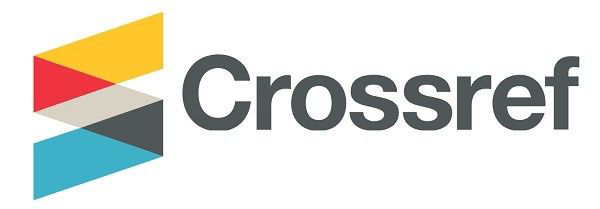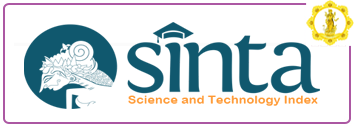Pengembangan Instrumen Tracer Study Berbasis Cluster Sebagai Kontrol Mutu Lulusan Perguruan Tinggi
DOI:
https://doi.org/10.25078/jpm.v7i1.1786Keywords:
tracer study, quality, clusterAbstract
The purpose of this research is to develop a cluster-based tracer study instrument that can be used to measure the absorption rate of graduates based on competency. This type of research is development. This study uses the ADDIE development model (Analysis, Design, Development, Implementation and Evaluation) i. The product appraisal instrument uses a quality assessment sheet involving material experts and an evaluation sheet which is used to determine the responses of stakeholders and graduates regarding the use of the product being developed. The type of data obtained is data about the process of developing a cluster-based tracer study instrument from the input of experts and graduates. The data analysis of this research used process data analysis and product quality data analysis. The results of the study were based on a feasibility test based on the material validator, assessment, and language validator which were assigned to the graduate assessment instrument with the criteria of "very suitable". The results of field trials showed the feasibility of the instrument as a tool for evaluating graduates was 86.5% so that it could be used as an alternative in tracing studies. These results are used as the basis for determining the success of higher education institutions in producing quality graduates
Downloads
References
Badan Pusat Statistik. (2015). Human Capital of Indonesia.
Carier Development Center (CDC UAD). (2016). Analisis Tracer Study Tahun 2016. Yogyakarta: UAD.
DIKTI. (2003). Pedoman Penjaminan Mutu Perguruan Tinggi.
Elassy, N. ( 2014). A model of student involvement in the quality assurance system at institutional level. Quality Assurance in Education, 21(2), 162-198. [Accessed 21 Mei 2017].
Widoyoko, eko Putro. (2009). Evaluasi Program Pembelajaran Panduan Praktis Bagi Pendidik dan Calon Pendidik. Yogyakarta: Pustaka Pelajar.
Flomo Jr, J.S. (2013). “Aligning Higher Education to Workforce Needs in Liberia: a Tracer Study of University Graduates in Liberiaâ€. Dissertation. University of Minnesota.
Mavhunga. P. J & Mazodze. (2014). “Quality of Educational Provision in Fast Track resettlement schools in Zimbabwe: A Case Study of Chiwodza Primary Schoolâ€. European Scientific Journal. Vol 1. p. 438-448. [Accessed 25 Mei 2017].
Millington, (2010). "Wikieducator," Open Education Resource Foundation, 1 June 2010. Available: http://wikieducator.org/images/e/e1/PID_424.pdf. [Accessed 25 February 2013].
Mugwisi, Tinashe & Hikwa, Lawton. (2015). “A Tracer Study of Master of Science in Library and Information Science Graduates from the National University of Science and Technology, Bulawayo, Zimbabweâ€. Afr. J. Lib. Arch. & Inf. Sc. Vol. 25, No. 2 (October 2015) p.173-183.
Molenda, M. (2003). “In search of the ellusive ADDIE modelâ€. Performance improvement, 42 (5), 34-36. [Accessed 25 Mei 2017].
Pemba, Senga et al. (2012). “Tracking University Graduates in the Workforce: Information to Improve Education and Health Systems in Tanzaniaâ€. Journal of Public Health Policy Vol. 33 P. 57 www.palgrave-journals.com/jphp/
Permendikbud No. 49 Tahun 2014 tentang Standar Nasional Pendidikan Tinggi.
Permendikbud No. 19 Tahun 2015 tentang Standar Proses Pendidikan Tinggi.
Ramirez, Thelma L; Cruz, L.T; Alcantara, N.V. (2014). “Tracer Study of RTU Graduates: An Analysisâ€. Journal of Arts, Science & Commerce Vol. V, Issue – 1, Jan. 2014. Diakses 17 Maret 2017.
Renny, dkk. (2013). “Exploring Tracer Study Service in Career Center Web Site of Indonesia Higher Educationâ€. International Journal of Computer Science and Information Security Vol. 11, No. 3, diakses 16 Maret 2017.
Sugiyono. (2015). Metode Penelitian Kuantitatif, Kualitatif, Dan R&D. Bandung: Alfabeta.









